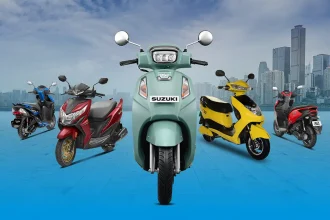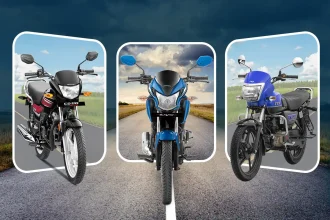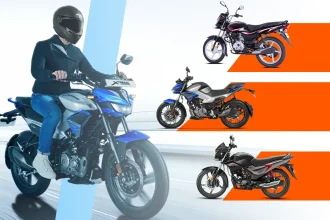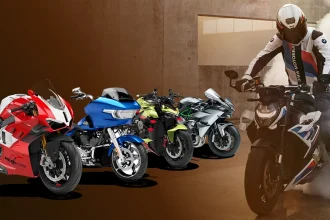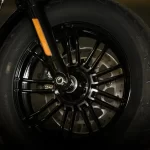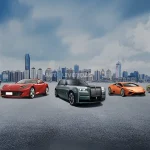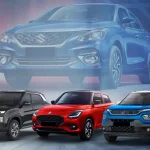Let’s explore What is Torque:
Torque is a familiar word; we see it in most car and bike advertisements, brochures, and spec sheets. The Oxford English Dictionary defines the word ‘torque’ as ‘a force that tends to cause rotation’. That doesn’t really tell us anything about its practical meaning or what it does, does it? This blog explores what is torque, its relationship to horsepower and RPM, and why it is relevant to car and bike enthusiasts.
Often, horsepower and torque are the two statistics used in bike and car advertisements to give us a clear idea about a vehicle’s engine and driving capabilities. While the general understanding is that bigger numbers are always better, you might not be aware of what these numbers actually represent. We hope that this blog gives you a clear understanding of what is torque, how it works, and what factors it influences.
What is Torque?
We can define torque as a rotational force, and in this case, this force affects a vehicle’s acceleration as well as its power. Let’s understand what is torque in automobile terms with the help of a simple example.
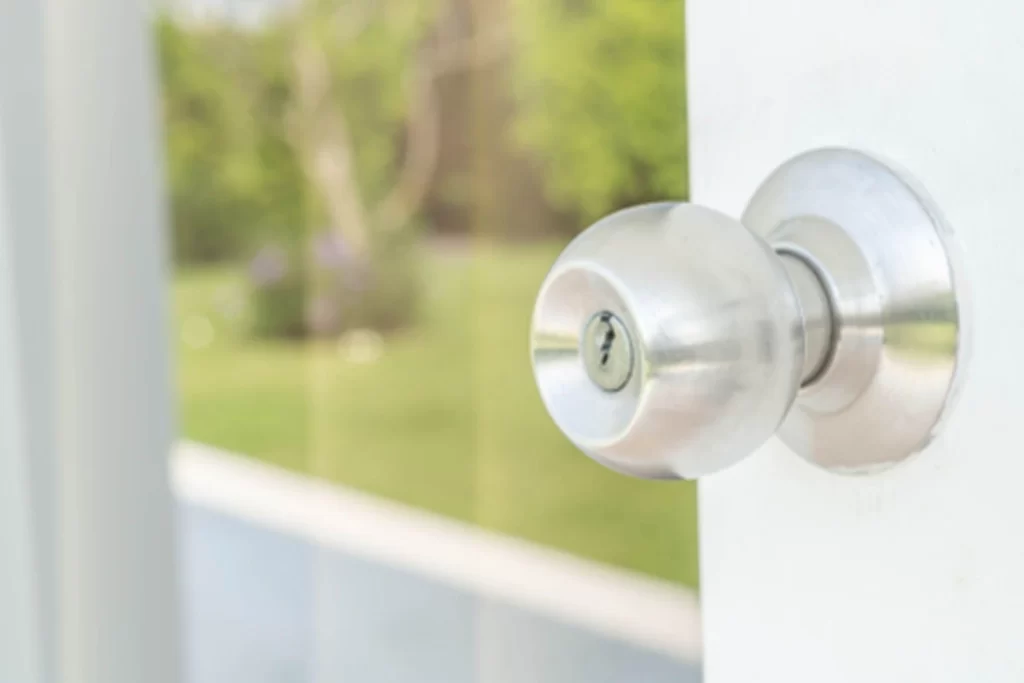
The round door knob pictured above represents a car’s engine. When you turn a doorknob, the force that you put into turning it is the torque. The speed at which the doorknob turns is the horsepower.
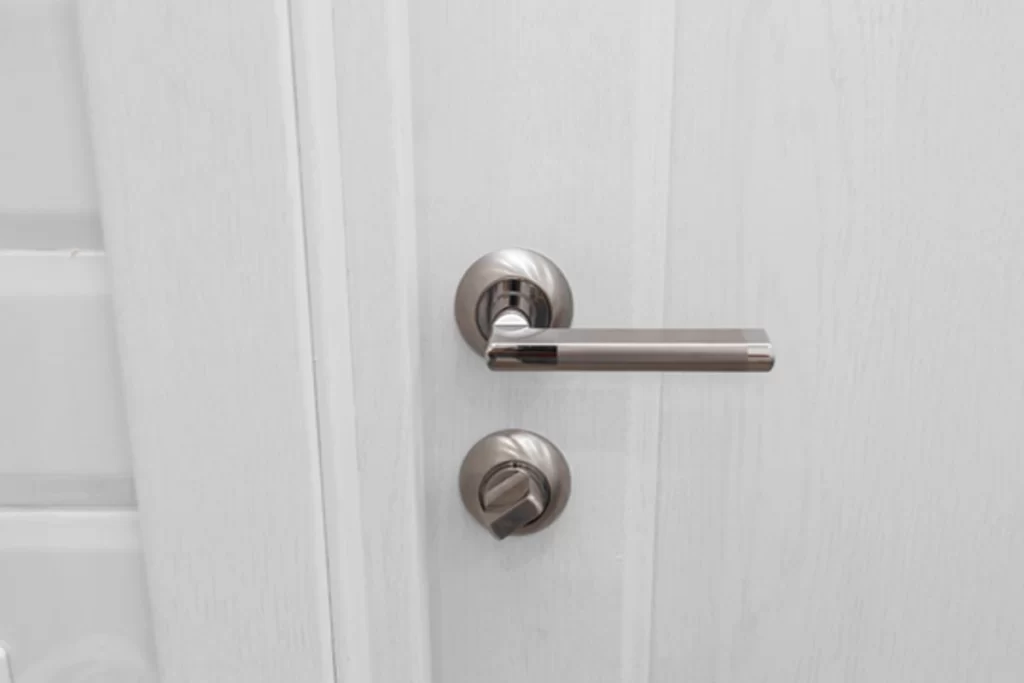
Now, let’s look at a more automobile-accurate example. The above doorknob has a long handle. Not only will this handle be easier to turn, it will also be able to turn more quickly and provide the same amount of force but with less effort. The shorter handle would have less torque and turn slower (less horsepower), while the longer handle would have greater torque and turn quicker (more horsepower).
Torque tells us how strong the engine is. A vehicle with high torque can accelerate quickly and will also have an easier time moving heavy loads or climbing up a slope. Vehicles with lower torque are less fuel-efficient as their engines need to work harder.
Torque creates a ‘pull’ which you feel as you accelerate. It dictates a bike’s capacity to carry heavy loads, as well as its hill-climbing ability and acceleration at lower speeds.
What is Torque in Cars?
In a typical internal combustion engine (ICE), pistons move up and down inside the cylinders to create energy. The crankshaft is connected to the engine’s pistons and transforms their reciprocatory motion into rotary motion, called torque.
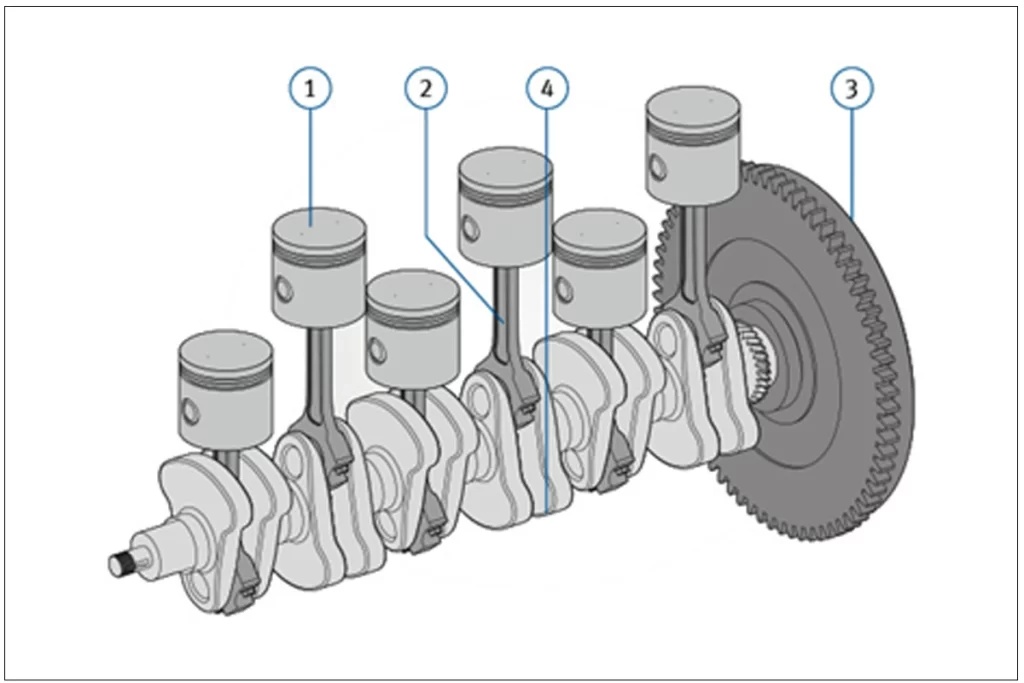
Too technical? In the above picture, the cylinder-like parts up top (1) are the pistons, the long rods below them (2) are connecting rods, and the lower bar-like contraption (4) is the crankshaft. So, pistons go up and down, which creates power. This power makes the crankshaft go round and round; that’s rotary motion, or torque.
From there, the torque generated reaches the transmission or gearbox and is then supplied to the tires and driveshafts. This force is used to propel the car forward and control its speed and acceleration.
The car moves forward when the force supplied is greater than the tire’s rolling resistance, the friction in the powertrain and drivetrain, and the wind resistance. When the force supplied by the engine is lower than these other forces, the vehicle slows down.
What is Torque in Bikes?
Bikes have smaller engines than cars, so they have lower overall horsepower and torque. However, torque is generated a bit differently in bikes. The base mechanism is the same: a piston pushes in and out of a cylinder, which produces torque. Torque in bikes is mainly affected by the bike’s bore and stroke. The bore is the width of the cylinder opening, while the stroke is the height that the piston travels from the lowest to the highest position.
On some motorcycles, the bore is bigger than the stroke. A shorter stroke makes it easy for the piston to go up and down and thus make more revolutions per minute (RPM). Such engines are called high-revving or short-stroke engines. For example, the BMW S 1000 RR.
When the bore is smaller than the stroke, the piston has to cover more distance per stroke and thus the crankshaft makes fewer revolutions per minute. These are called low- revving or long stroke engines. For example, the Suzuki Gixxer.
We’ll explore high-revving and low-revving bike engines in more depth later.
How Does Torque Relate to Horsepower?
Did You Know?
The term ‘horsepower’ was first used by Scottish engineer James Watt in the 18th century. He thought of it while devising a marketing hook to advertise how his invention, the steam engine, was better than draft horses.
Torque is the rotational force that turns your wheels. While driving, higher torque generates traction and that signature ‘thrust’ you associate with fast cars. When you step on the accelerator and the force pushes you back in your seat, that’s torque at work.
But what is torque ’s relationship with horsepower? While torque will affect your vehicle’s acceleration, horsepower will influence how quickly it can accelerate. While torque will get your car or bike started, horsepower is what will keep you moving past that point. Torque affects what a vehicle can do; horsepower measures how quickly it can do it.
Horsepower is a measure of the peak performance of the engine. An engine’s horsepower cannot be directly measured; it must be calculated with the help of the measured torque and RPM. Horsepower is calculated through the following equation:
Horsepower = torque x RPM/ 5,252 (when using imperial units) or 7127 (when using metric units)
The Torque Curve
Both RPM and horsepower are mathematically linked to torque. Let us understand what is torque like while actually driving a car or bike by looking at how it is generated via a torque graph. A torque graph measures the amount of torque an engine produces at different RPMs.
RPM stands for revolutions per minute. It measures how many times the engine crankshaft rotates in a single minute. You usually see RPM numbers on your tachometer. Each number represents one thousand revolutions per minute. If the indicator says 3, it means that currently you are driving at 3000 RPM and the crankshaft is rotating 3000 times per minute.
In ICE engines, the torque peaks and then begins to taper as horsepower increases.
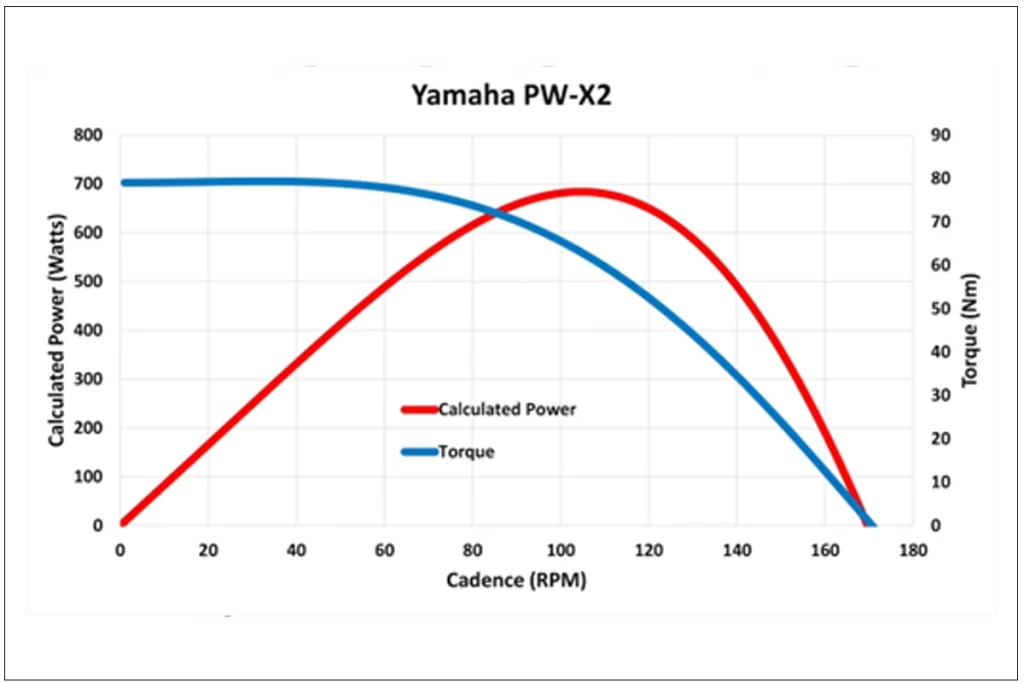
Usually, you will reach peak torque while at lower RPMs, and torque generated will remain constant until you achieve maximum horsepower. Once you’ve hit peak horsepower, the amount of torque generated decreases with each revolution, and you won’t accelerate as well past that point.
But your engine is now making more torque per second. Since more work is being done, horsepower increases even while torque continues to decline. This results in higher speed but a reduced rate of acceleration. As Michael Griese, BMW project manager for electrical drive systems, puts it, “At low engine speeds it’s the torque that matters; at high speeds it’s the engine power.”
High torque at higher RPMs will create tremendous power, but you will have to accelerate to a higher RPM before the thrust from the torque kicks in. On the other hand, high torque at lower RPMs will feel great but will start to fall as you pick up speed. To combat this, manufacturers aim to design engines that provide high torque at lower speeds but also evenly apply torque over a larger engine speed range.
How Do Torque and Horsepower Relate to RPM?

The maximum engine speed (RPM) at which a bike or car can be operated without damaging the engine is called its redline. Cars and bikes have different redlines. Most cars have a redline of 5,000 to 7,000, though sports and race cars can have higher redlines ranging from 8,000 to 11,000. Most bikes typically redline between 1,500 and 4,000, but sports and racing bikes can achieve higher rev limits ranging from 80,00 to 14,000.
When comparing two vehicles with the same torque, the one with the higher RPM will always create more horsepower. We’ll explain what this means by comparing the horsepower generated by the Bajaj Pulsar RS 200 and the Keeway Blackster.
The cruiser motorcycle Keeway Blackster makes 18.7 Nm torque at 5,750 RPM, while the sportsbike Bajaj Pulsar RS 200 makes 18.7 Nm at 8,000 RPM.
Since we’re using the metric unit Nm, we’ll use the formula Horsepower = torque x RPM/ 7127.
While delivering 18.7 Nm torque, bike one makes 13.77 horsepower, while bike two makes 20.99 horsepower. The Blackster makes the same amount of torque, but since torque is being generated fewer times per minute (lower RPM), the horsepower generated is low. The Pulsar is more efficient since it generates the same amount of torque more times per minute and thus generates higher horsepower, resulting in greater speed.
While driving at the redline, torque isn’t at its peak. However, since torque is being created more times per minute, a bike with low torque but high RPM can easily be faster than a bike with high torque but low RPM.
Remember what we mentioned about high-revving and low-revving bikes? High revving bikes have shorter strokes and can achieve higher RPM limits. Most high revving bikes are sports or race bikes, which need to have a high top speed. With higher RPM, they make high horsepower even with low torque. For example, the Hero Karizma XMR reaches maximum torque of 20.4 Nm at 7250 rp and has a 10,000 RPM limit.
On the other hand, low-revving bikes have longer piston strokes and thus achieve lower RPM numbers. Most low-revving bikes are heavy cruiser bikes, which have high torque and low horsepower (because of lower RPM). Their main purpose is to carry weight and cruise highways at relaxed and stable speeds. However, they accelerate well and feel powerful due to their high torque numbers. For example, the BMW R 18 Transcontinental reaches 158 Nm at 3,000 RPM and redlines at 5750.
There are physical constraints on how many rotations a vehicle can achieve safely. This is where high torque comes in and allows you to enjoy more horsepower even at lower RPMs.
Many sportscars and even Formula One race cars don’t have high torque figures. They can revv to crazy-high RPMs though, so they deliver a high horsepower/low torque ratio. On the other hand, trucks and SUVs have a high torque/low horsepower ratio as they are optimized to carry people and cargo rather than delivering a high top speed.
How Torque Works in Different Vehicles
So, what is torque in cars and bikes affected by? Torque works a little differently in different types of engines and fuel. Let’s take a look at how fuel type can affect a vehicle’s torque.
Petrol/Gasoline Engine
- In a petrol ICE, the highest torque is achieved when the engine reaches its top speed. Torque becomes less relevant once the vehicle starts moving, since it isn’t necessary to keep it in motion.
Diesel Engine
- Diesel engines typically produce more torque than petrol engines. Since they have a longer piston stroke, the pistons move further inside the engine’s cylinders and thus produce more torque. Plus, while petrol ignites with spark plugs, a diesel engine uses fuel compression. Diesel also has a higher energy content, which contributes to higher torque numbers.
- Diesel engines generate more torque at lower RPM than similar petrol engines. Since the engine doesn’t need to work as much to keep a car moving, diesel vehicles have better climbing, towing, hauling, and even off-roading capabilities.
Turbocharged Engines
- Turbochargers use exhaust gases and air to increase the pressure inside the engine’s cylinders, which leads to an increase in torque. Turbochargers and superchargers also distribute the maximum power over a wider RPM range. This means that instead of torque peaking early and dropping off, you will achieve maximum torque and rapid, thrusty acceleration at higher RPMs.
Electric Vehicles
- In an electric bike or car, power is supplied by electric motors rather than ICE engines. So since there’s no crankshaft or pistons, an electric vehicle supplies peak torque instantly, without the delay of its ICE counterparts. That’s why many electric vehicles can get away with smaller torque figures, as they don’t have to reach a certain RPM to deliver maximum torque.
- This is one factor that contributes to the enjoyable driving experience that EVs offer. While the lower torque still works great, look for an electric vehicle with higher torque if you’re planning on carrying heavy loads.
Hybrid Vehicles
- Hybrid engines too benefit from instant torque. Even cars with low power and torque numbers will be quick and zippy. The ICE engine of a hybrid car typically has low torque as a lot of the car’s power is delivered from the electric motor. The electric assistance delivers quick and instantaneous torque at lower speeds.
What Does Torque Affect?
Driving Experience
- Higher torque makes it easier to generate power at lower gears. High torque translates to smooth and responsive acceleration at low speeds, which makes driving more enjoyable.
Acceleration
- Torque directly affects acceleration. A higher torque leads to faster acceleration at lower speeds.
Fuel Efficiency
- Torque plays a huge role in a vehicle’s overall fuel efficiency. Cars and bikes with sufficient torque will drive well even at lower RPMs and are fuel efficient. On the other hand, low-torque engines have to work harder to do the same and thus consume more fuel.
Easy to Carry Loads
- A higher torque will make it easier for you to carry heavy loads on your bike or car. Without torque, your vehicle’s ‘pulling’ capacity will be significantly reduced. That’s why heavy bikes have torque-y engines while commuter bikes don’t. A heavy pickup truck like the Isuzu D-Max V-Cross has 360 Nm of torque and is capable of easily carrying cargo and people.
Easy to Climb Slopes
- Torque can also be understood as the thrust or force that pushes the vehicle along (while horsepower is how fast it does it). A off-road SUV like the Jeep Wrangler with 400 Nm of torque will be able to climb slopes easily, as great force is supplied to the wheels. Torque also enables us to maintain speed as we drive up a hill and makes it easier to drive off-road.
Do I Need Torque or Power?
Not everyone needs a lot of power or torque. Both stats are measured at peak RPM, and unless you participate in drag races, you’ll rarely accelerate all the way up and hit peak horsepower. Peak torque usually kicks in somewhere between 2000 and 6000 RPM, so in the city, you’re likely to experience peak torque more often than peak horsepower.
Earlier, we mentioned that horsepower affects an engine’s maximum speed. So if you plan on driving your car or bike in the city, you’re not going to be moving past speedlimits. In these situations, and in traffic as well, higher torque will make your vehicle feel quicker, more punchy, and responsive at lower RPMs. A vehicle that optimizes horsepower won’t feel as fun or easy to drive.
While torque measures how much work an engine can perform, horsepower is the measurement of how quickly it can be performed. This means that without good horsepower, you will be able to achieve the same things, just slower. So if you don’t really need speed, torque should matter more to you than power.
Vehicles like trucks and buses have high torque, but not as much horsepower as they don’t need to be fast. The same is true for many pickup trucks and heavy-duty off-road vehicles. That is why large cars like the Toyota Land Cruiser may feel powerful but slow while on the highway while being able to climb rocks and traverse tricky terrain with ease. This is why SUVs like the Land Rover Defender OCTA are so extraordinary, as they are able to deliver both high torque and speed.
Picking What’s Best For You
If speed is important to you, your bike or car should definitely have high horsepower. Make sure to pay attention to RPM and torque too, as they have a huge impact on both speed and driving experience.
High torque is more useful while traveling long distances or on open stretches or highways. A car or bike with good low-end torque will feel powerful even at low speeds and provide punchy acceleration. But if you spend the majority of your time driving in congested city streets, a high torque figure won’t matter as much.
If you’re buying a large SUV or a car that you’ll use to carry a lot of luggage or groceries, go for a vehicle with high torque. Most large cars today have higher torque numbers as they’ve been designed for ‘power’ rather than speed. If you really like taking off quick and accelerating fast, an electric vehicle like the Kia EV6 will provide 650 Nm of torque instantly.
Key Takeaways about What is Torque?
Ultimately, what is torque doing in a bike or car? It impacts the other workings of the engine but doesn’t override them.
You must have seen a lot of cars and bikes proudly tout their torque specifications. Even though we may often see large torque ratings displayed in bold text, a car or bike with high torque may not be right for you. Besides, manufacturer-supplied power and torque numbers can be misleading as they might not be achievable in real-world conditions.
While power and torque are important, they aren’t standalone attributes. Horsepower is basically how the torque functions at certain RPMs. Gears, weight-to-power ratios, torque-to-weight ratios, RPM, etc. all play a huge role in how a car or bike drives and performs. Though torque is a complicated subject, we hope we’ve managed to answer the question, ‘What is torque?’ in a simple and concise manner. Here are some resources for further reading about torque:
Frequently Asked Questions (FAQs)
How is the torque of a vehicle measured?
Torque is measured with an instrument called a dynamometer.
What is the unit of measurement for torque?
Torque is commonly measured in the metric unit of Newton meters (Nm). Some places, like the US, use the imperial unit lb. ft. (pounds-feet) instead. 1 Nm = 0.738 lb. ft.
Why do cars have more torque than motorcycles?
Cars are generally much heavier than motorcycles and aren’t used to carry around as many people or things. So motorcycles have lower torque than cars.
What is more important: horsepower or torque?
It depends on what you’re using your vehicle for. If you drive at high speeds, horsepower is more important. If you want strong acceleration and the ability to carry heavy things, torque is more important.
Are there any high-torque bikes in India?
The Kawasaki Ninja H2R has a very high peak torque of 165 Nm at 12,500 RPM.




